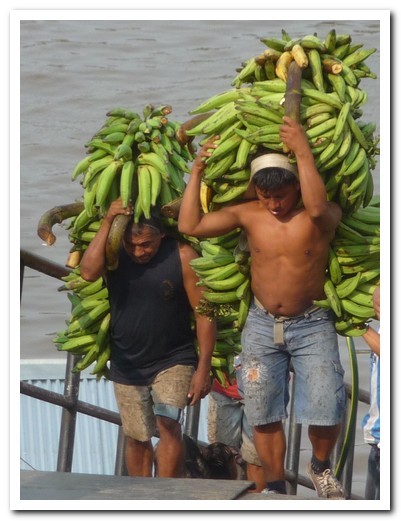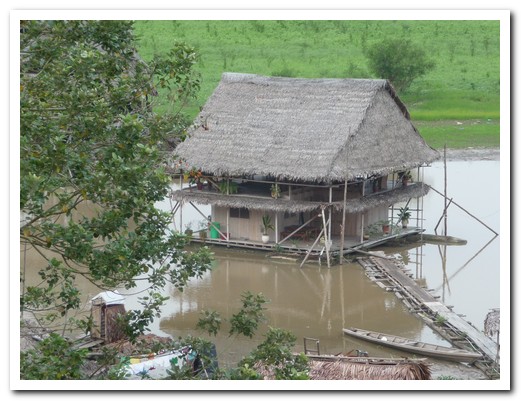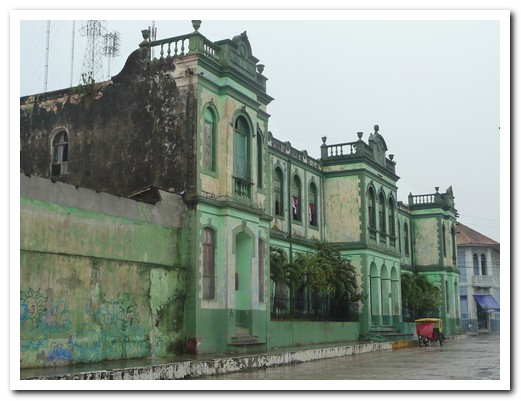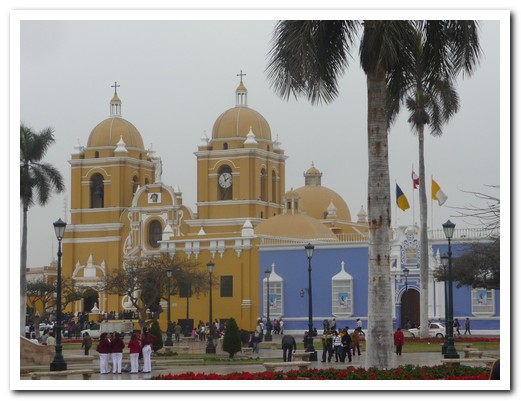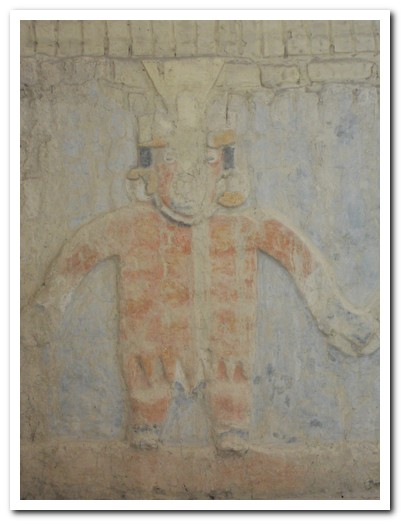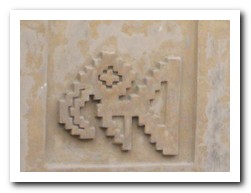Categories
- Argentina
- Chile
- Antarctica
- Easter Island
- Falklands (Malvinas)
- Bolivia
- Peru
- Uruguay
- Paraguay
- Brazil
- Venezuela
- Colombia
- Ecuador
- Galapagos
- Panama
- Costa Rica
- Cuba
- Nicaragua
- Honduras
- El Salvador
- Guatemala
- Belize
- Mexico
- Latin American Xmas
Pages
- Map of South America
- Home Page
- First week in Latin America – October 2009
- Map of Central America
- Contact Us
- The Jesuit Missions in South America
- A week in Buenos Aires
- Street Art of Buenos Aires
Archives
- October 2011 (3)
- September 2011 (9)
- August 2011 (10)
- July 2011 (7)
- June 2011 (6)
- May 2011 (11)
- April 2011 (10)
- March 2011 (4)
- February 2011 (5)
- January 2011 (6)
- December 2010 (6)
- November 2010 (4)
- October 2010 (8)
- September 2010 (5)
- August 2010 (7)
- July 2010 (5)
- June 2010 (6)
- May 2010 (6)
- April 2010 (7)
- March 2010 (6)
- February 2010 (9)
- January 2010 (4)
- December 2009 (8)
- November 2009 (5)
- October 2009 (2)
Lake Titicaca – Peru
21st June 2010
Our bus from Copacabana to Puno was cancelled due to a road blockage in Peru. To make matters worse, the electricity went off for the rest of the day. The only restaurant in town serving dinner by candlelight was called ¨Welcome to Puno¨, but we were still in Copacabana. Luckily we were able to get to Puno the next day to make our train.
.
Just off Puno are the 40 floating reed islands of Uros where 2000 people live. We had just enough time for an evening visit, returning to Puno after dark, the city lights reflecting across the calm water. A fine Peruvian wine complemented our Alpaca steak and puree de papa dinner.
.
From Puno to Cusco, we crossed the Altiplano in the Andean Explorer, a luxury tourist train. By 10am, a Pisco Sour in hand, we were enjoying Peruvian music played by a colourful band. A 3 course lunch with wine followed. We didn´t want it to end.
.

The border between Bolivia and Peru

The Uros floating reed islands
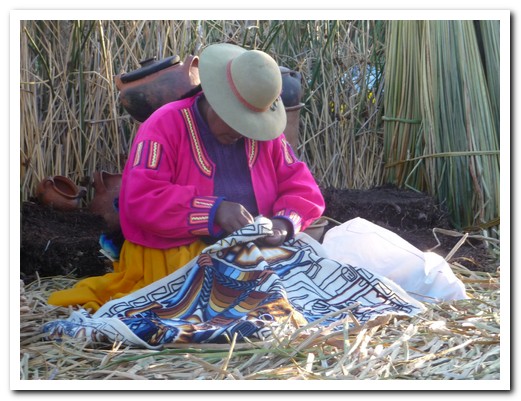
The women make beautiful cloth hangings

They tell stories of island life


Cooking is done outside

Alpaca steak for dinner

Our train to Cusco

Enjoying a pre lunch Pisco Sour

The bar carriage

A live Peruvian band on board

And traditional dancing

Cusco and the Sacred Valley
28th June 2010
Cusco, founded around 1100AD, was the capital and spiritual centre of the Inca Empire until the Spanish arrived in 1532.
.
Today Cusco contains a beautiful mix of Inca and Spanish architecture. As we were walking the Inca Trail we missed the annual Inti Raymi Festival (Festival of the Sun) in Cusco but were lucky enough to watch the dress rehersal a few days before without the crowds. Apart from being a lovely place to stay, Los Niños Hotel uses the profit to feed and care for some 600 street children in Cusco.
.
The fertile Urubamba River Valley or Sacred Valley close to Cusco has colourful markets and many Inca ruins.
.

Jesuit Church (Iglesia de la Companía de Jesús) on the Plaza

Monasterio Santa Teresa

The twelve sided stone in an Inca wall in Cusco

Iglesia de San Blás

Cusco street

Ceramic bulls on the roof to say thank you to the Mother Earth

Iglesia de Santo Domingo built on Inca foundations

Iglesia de San Francisco

Iglesia de San Pedro

Arco Santa Clara

Guinea pig - a real delicacy

Hotel Los Niños

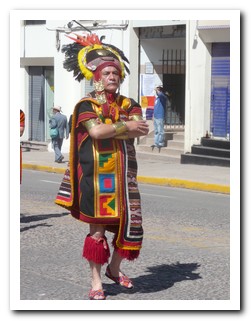


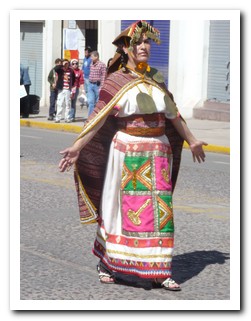








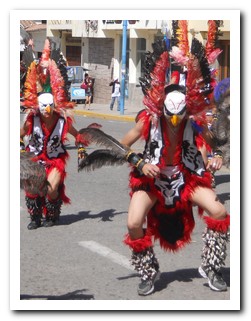
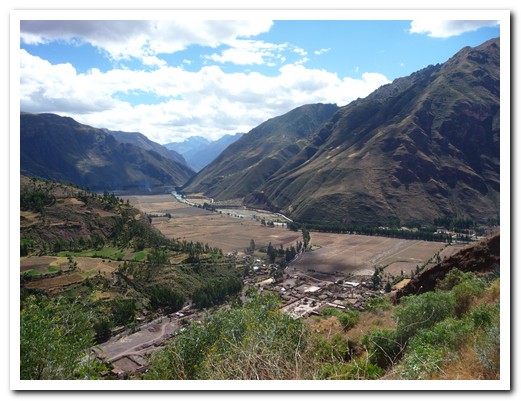
The Sacred Valley

Saqsayhuamán outside of Cusco

Stone doorway

Huge stones used to make the walls

Písac and its terraces

Steep stairway at Písac

Sacrificial altars at Q´engo Inca site

500 year old fountains still running at Tambomachay Inca site

Ollantaytambo at the end of the Sacred Valley
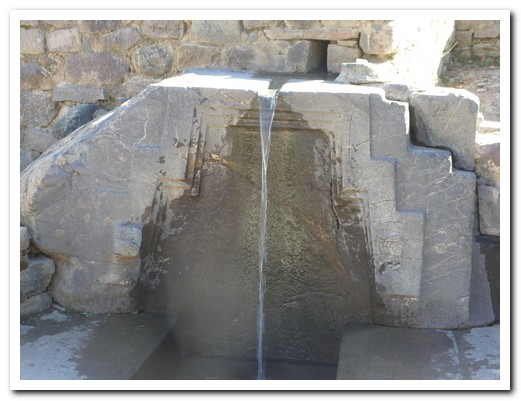
Fountain at Ollantaytambo
The Inca Trail
30th June 2010
The first day of the Inca Trail was relatively easy compared to what was to come. The only problem was waddling away after chef Alberto´s 3 course, 5 star lunch. It was obvious that Katie had made the right decision choosing the trekking company Llama Path.
.
Our guide Santiago, was a wealth of knowledge about the Inca and the various sites we passed on the trail as well as the flora and fauna. He made the stories come alive. ¨The Red Army¨, 9 porters together with the chef all dressed in red, carried our supplies. Each day when we arrived into camp, we were greeted with applause, even though we should have been applauding them for their effort. In the morning we were woken up with a cup of coca tea in our tents and hot water for a wash.
.
The second day was a slow trudge up and over Dead Woman´s Pass at 4215 metres, no easy feat, followed by 800 metres of descent. On day 3 we crossed a lower pass at 4000 metres with more Inca sites, walking on original Inca road. The trail passes through cloud forest and higher up, open grassland. Many wild flowers and orchids can be seen as well as bromeliads and tillandsias. The stunning views of the surrounding mountains got better and better. Although 500 people per day are allowed on the trail (200 trekkers and 300 porters and guides), most of the time we had the path to ourselves.
.
On day 4 we passed more Inca sites. Stone water fountains are still running after 500 years. Stone terraces rise steeply up the mountainside. On reaching the Sun Gate, we had our first glimpse of Machu Picchu, the magnificant Inca city beneath the Huayna Picchu mountain. We had made it!
.

Starting the Inca Trail

Q´anabamba Inca site
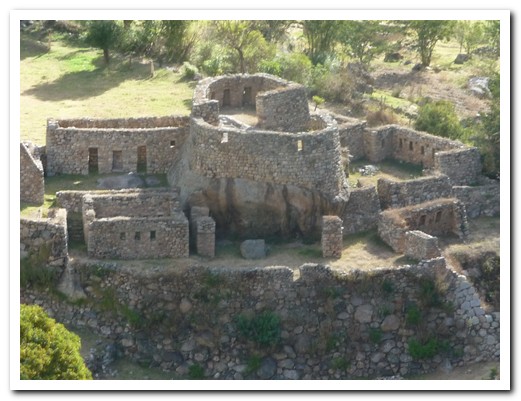
Q´entimarka Inca site

Mountain Veronica

The Red Army on the move

Shady path

Wild deer grazing

Runkuraqay Inca site (in the shape of the Inca knife)
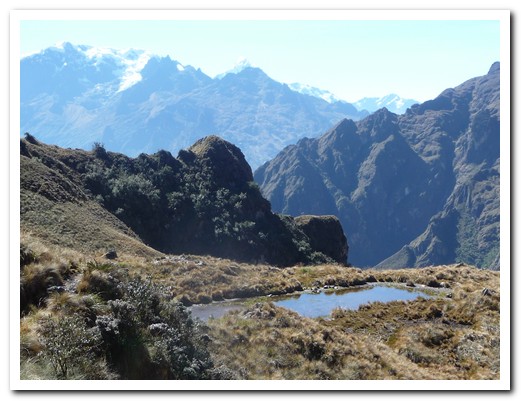
High altitude lake

Sayaqmarka Inca site

Qonchamarca Inca site

Phuyupatamarka Inca site

Full moon on the trek

Sunset from night 3 camp

Breakfast on top of the mountain

The terraces of Intipata

There are thousands of old worn steps on the Inca Trail

Wiñaywayna Inca terraces

Machu Picchu - we made it!
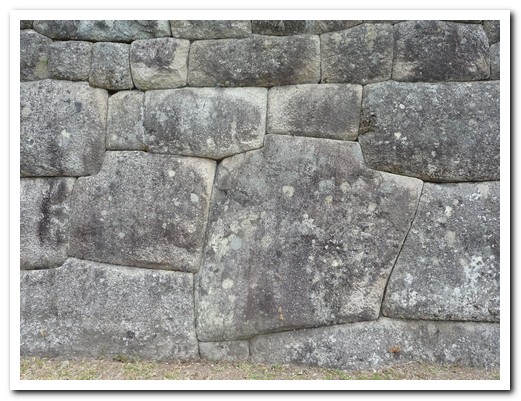
Fine stone walls used on the important buidings

Double doorway into the kings chamber

The sun shines through onto altar in the temple of the sun
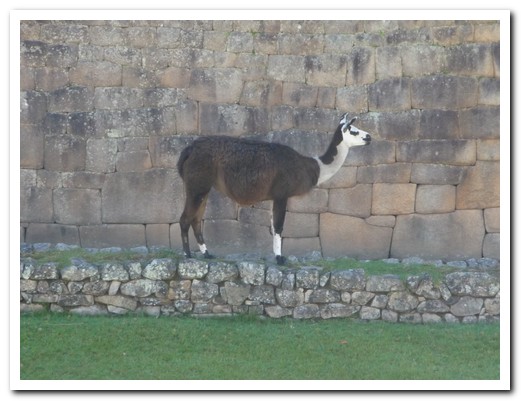
Machu Picchu llama

Temple of the Condor

Row of store houses in Machu Picchu

Inca bridge - pull up the planks to prevent enemy entering
Flowers of Machu Picchu
01st July 2010
Along the Inca Trail is a surprising number of wild flowers and orchids.
.
Stopping to look and photograph them was a good excuse for a rest on the steep track.
.

























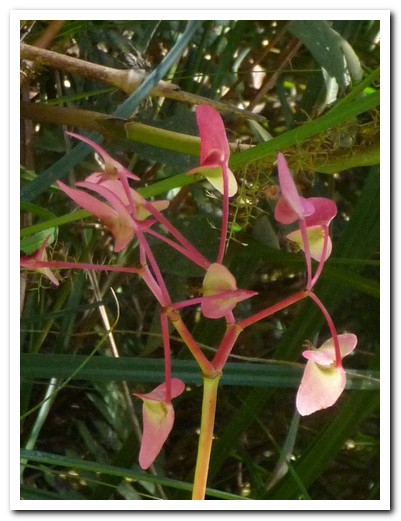

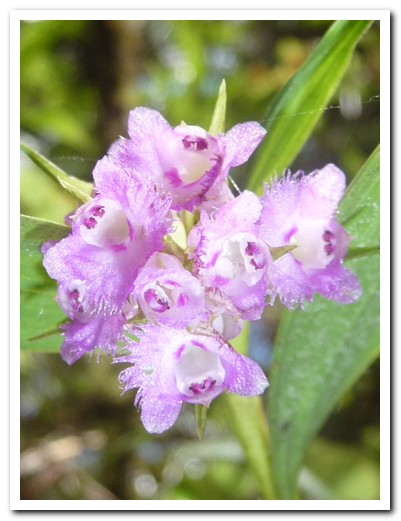

Lima
13th August 2010
Lima, Peru´s capital, was founded in 1535 by the Spaniard Pizarro and became the capital of the Viceroyalty of Peru. In 1991, UNESCO declared the city centre a historical monument. Downtown contains many impressive colonial churches and 19th century houses with stunning balconies as well as lovely plant filled plazas. Lima also boasts the oldest bullring in the Americas and the third oldest in the world.
.
The area around Lima had been inhabited for thousands of years and in the nearby suburb of Miraflores is Huaca Pucllana, a pre Columbian ceremonial complex made from adobe bricks.
.

The Government Palace on the Plaza de Armas

Lima´s Cathedral
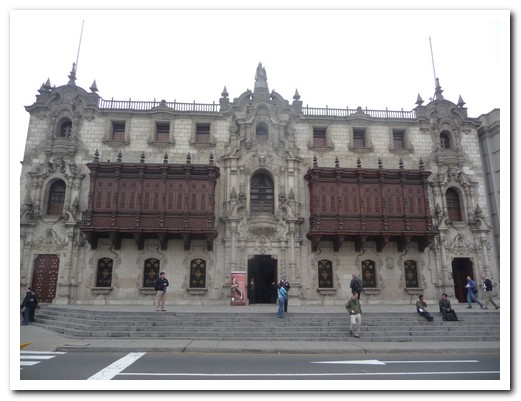
The Archbisop´s Palace

Lima downtown

Osambela House

San Francisco Monastery has extensive catacombs underneath

Santuario de Santa Roas de Lima

Jeff checking out the carved front of the Iglesia de San Agustin
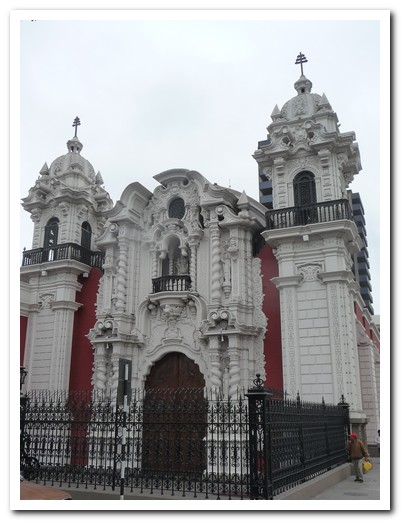
Iglesia de San Marcelo

Convento de Santo Domingo

Courtyard inside the Convent features tiles from Spain (1606)

Stained glass windows of Lima´s Saints

Detail of the entrance to the Iglesia de la Merced

Iglesia de San Pedro

Central Lima building (19th century)

The sculptor was told to put llamas (as in flames) on her head but put llamas (as in llamas)

This bullring is the oldest in the Americas and still used

Building in Miraflores (suburb of Lima)
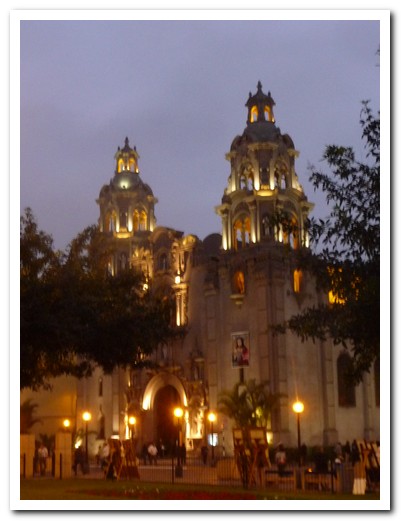
Miraflores church

Pyramid of Huaca Pucllana
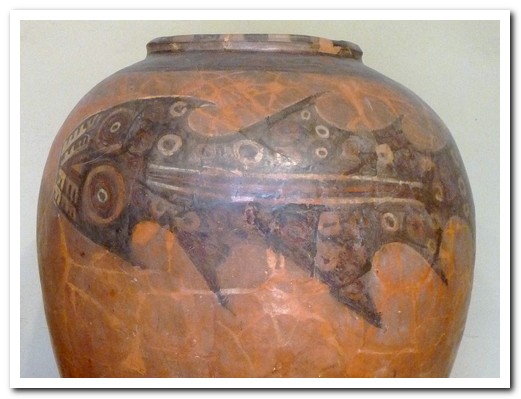
The shark was important to the pre Inca Lima people

Pre Inca funeral masks

Clay figure found at the Huaca Pucllana site

Succulents grow well in Lima´s desert climate
Iquitos
20th August 2010
Iquitos, on the banks of the Amazon River in Peru´s steamy jungle region, can only be reached by boat or plane. The Jesuits established a mission here in 1757 but the indigenous people resisted being converted. We arrived in time for the morning downpour. The city buzzes with moto-taxis. Boats ply the river carrying produce from villages up and down stream. Crumbling mansions stand as reminders of the more prosperous days of the rubber boom in the late 19th century.
.
From early morning, canoes paddle around the floating shantytown of Belén, selling all kinds of jungle goods, including monkeys and turtles dead and alive. We picked up 2 local guides in the Belén market (or they picked us up), Lito (Phone 965835320) and Marlon. They showed us parts of Belén into which we would not have been brave enough to venture. We then went by boat past the floating houses, shops, bars and restaurants, some now high and dry to visit Lito´s own house on stilts, and saw the giant water lilies on the way.
.
In the nearby village of Padre Cocha there is a butterfly farm but unfortunately the butterfly section was closed the day we went. They also have a refuge for local animals which was open.
.
Amazon River – Peru
21st August 2010
From Iquitos, a 3 hour boat trip 140 kilometres up the Amazon and then into a smaller tributary bought us to the Muyuna Amazon Lodge for a 4 day stay. The lodge is built from bush materials on the water´s edge, deep in the jungle, and is lit at night by kerosene lamps. Being the dry season, the water level in the river was low, but can rise by 10 metres in the wet, inundating the jungle. The villages along the river banks take advantage of the exposed alluvial soil to grow rice and other crops between June and November.
.
With Clider, our experienced local guide, we explored remote locations by boat and on foot, looking for plants, animals and birds. We had fun fishing, visited Clider´s village, spotted a sloth high in the trees, saw monkeys, tiny bats, pink river dolphins and the giant waterlilies growing to 2 metres across. There was still time to relax in the hammocks and listen to the strange noises all around us.
.
Southern Peru
27th August 2010
Arequipa, dubbed the white city for its many colonial buildings made from light coloured silla volcanic stone, is Peru´s second largest city. It lies in the shadow of 3 volcanos. Santa Catalina de Siena Convent, a city within the city of Arequipa remained closed to the public for 391 years until it was opened in 1970. 30 nuns from 18 to 90 years old remain. We tried Rocotto Relleno, a Peruvian dish of red peppers stuffed with a mixture of minced meat, raisins and nuts (riquísimo).
.
Nearby Colca Canyon at 3191 metres is twice the depth of the Grand Canyon. A patchwork of terraced fields dating from 400 AD lines both sides and condors soar high on the thermals. There are many hiking opportunities between traditional villages. The women wear bright, intricately embroidered clothing and hats.
.
Only appreciated from above, the gigantic Nazca Lines are truly awesome. They consist of some 800 lines, 300 geometric figures and 70 plant and animal drawings made by the Nazca people between 900BC and 600AD in the desert sands. The lines were made by removing the sunburnt brown stones leaving the lighter desert sand exposed. Wind keeps the channels clean. Their purpose remains a mystery today. 1600 years ago the Nazcas constructed several kilometres of underground aqueducts to bring water to their fields. Every 6 meters, wells allow access. The aqueducts and wells have survived time and earthquakes to still function perfectly today.
.
We have celebrated 1 year of travelling.
.
Northern Peru – The Coast
02nd September 2010
Clocking up bus miles, we headed 9 hours north to colonial Trujillo, named in honour of Francisco Pizarro´s birthplace in Spain when he founded the city in 1534. Trujillo is home to the Peruvian stepping horse and the most elegant dance, the Marinera. The central plaza was alive with people celebrating the Virgencita de la Puerta saving the city from a pirate attack in 1674. People dressed as gypsies and slaves danced in the streets, illustrating Trujillo´s colonial past.
.
Pre Inca, civilizations of the Mochicas and then Chimus inhabited the area. The area is dotted with what appears to be huge mounds of sand, but are in fact ancient adobe temples. The Mochicas (approx 0 – 800 AD) had a custom of burying old temples under new ones which helped in preservation, and archaeologists are still peeling away the layers.
.
Recently in the Huaca Cao Viejo (El Brujo), a tattooed mummy of a Mochica queen was unearthed. Here is a YouTube movie of the discovery. Other Mochica temples include Huaca del Sol (Sun Temple)made from 140 million adobe bricks, now resembling a giant pile of rubble is still to be excavated. The smaller Huaca de la Luna (Moon Temple) is nearby. Until recently it was covered by tons of sand, preserving the beautifully decorated 5 level facade.
.
Chan Chan, in an outer suburb of Trujillo, was the capital of the Chimu Empire (approx 800 – 1470AD), and the largest adobe city in the world, housing some 1000 thousand people. We visited one of nine palaces with reconstructed walls highly decorated with figures resembling fish, pelicans and sea otters as well as mythical scenes and geometric shapes.
.
Totora (reed) boats, caballitos, are still used for fishing at the nearby coastal village of Huanchaco.
.
Further north lies Chiclayo. In nearby Sipán, in 2 adobe pyramids, to date 16 graves have been discovered in Huaca Rajada. The first one belonged to the Mochicas most important ruler, the Lord of Sipán. His body was covered with layers of ornaments and surrounded by offerings in hundreds of ceramic pots in forms of his relatives and friends. Six other people were sacrificed lie with him. Fortunately it had not been discovered by grave robbers. Grave number 16, discovered 2 weeks ago (mid August 2010) was being unearthed when we visited. The Museo Tumbas de Sipán in Lambayeque contains the articles found in this and other tombs, giving an excellent insight into the sophisticated culture of the Mochicas. It is one of the world´s great museums. No photos allowed (but look here)!
.



